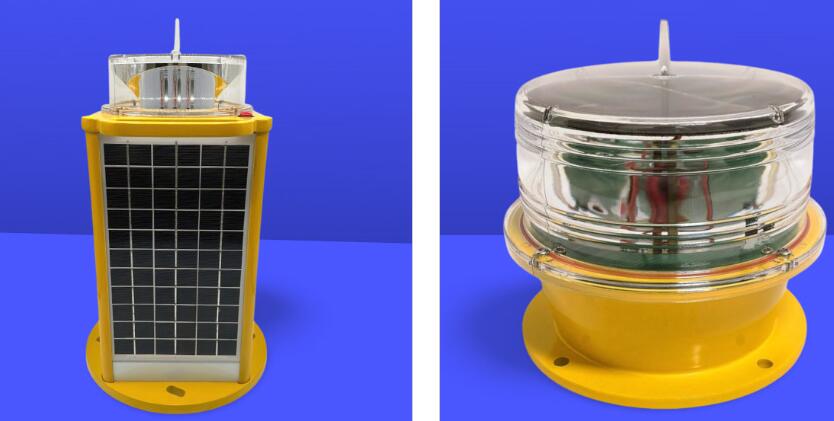Harnessing Solar Power: The Evolution of Solar Powered Aviation Obstruction Lights
The aviation industry's push toward sustainable infrastructure has elevated solar powered aviation obstruction lights from niche solutions to mainstream safety systems. These self-sufficient lighting units combine cutting-edge solar technology with rigorous aviation safety standards to mark obstacles without grid dependency. This article examines the technical innovations, regulatory compliance, and operational advantages of modern solar powered aviation obstruction lights that are transforming airspace safety worldwide.
Core Technology Breakdown
1. System Architecture
High-efficiency photovoltaic panels (22-24% conversion rate)
Intelligent charge controllers with MPPT technology
Deep-cycle lithium/gel batteries (5-7 day autonomy)
LED light heads (50,000+ hour lifespan)

Aircraft-grade aluminum enclosures (IP66 rated)
2. Performance Specifications
Light Intensity: 32.5-200,000 candela options
Flash Patterns: 40-60 FPM (flash per minute)
| solar powered aviation obstruction light |
Operational Temperature: -40°C to +70°C
Wind Resistance: 150+ mph survivability
Regulatory Compliance
Modern solar powered aviation obstruction lights meet all major standards:
FAA AC 150/5345-43J (Obstruction Lighting Equipment)
| solar powered aviation obstruction lights |
ICAO Annex 14 (Aerodrome Design and Operations)
EASA CS-ADR-DSN (Aerodrome Design Certification)
IEC 60529 (Ingress Protection Ratings)
Certification requires successful completion of:
90-day continuous operation tests
Extreme weather simulations
Photometric performance validation
Electromagnetic compatibility trials
Installation Advantages
Solar powered aviation obstruction lights offer unique deployment benefits:
Rapid Commissioning
No trenching or electrical permits required
Typical installation in <4 hours
Minimal site preparation
Location Flexibility
Remote mountain tops
Offshore platforms
Jungle environments
Desert installations
Cost Efficiency
Eliminates grid connection expenses
No recurring electricity costs
Reduced maintenance visits
Maintenance Protocols
Ensuring peak performance requires:
1. Scheduled Inspections
Biannual panel cleaning
Annual battery health checks
5-year comprehensive system review
2. Performance Monitoring
Remote diagnostics via IoT
Automated failure alerts
Historical performance tracking
3. Component Replacement
Batteries every 3-5 years
LED modules at 10+ years
Solar panels at 15-20 years
Emerging Innovations
The next generation of solar powered aviation obstruction lights incorporates:
Advanced Energy Management
Hybrid solar/wind systems
Supercapacitor storage
Energy sharing networks
Smart Lighting Features
Aircraft-activated illumination
Adaptive brightness control
Predictive maintenance algorithms
Enhanced Durability
Self-healing surface coatings
Hurricane-resistant mounting
Ice-phobic lens treatments
Environmental Impact
Solar powered aviation obstruction lights contribute to sustainable aviation through:
Zero operational emissions
Reduced light pollution (directional optics)
Minimal wildlife disruption
Recyclable component design
The evolution of solar powered aviation obstruction lights represents a successful marriage of renewable energy and aviation safety requirements. These systems now deliver reliability matching traditional wired solutions while offering unparalleled flexibility in challenging environments. As solar efficiency continues to improve and energy storage technology advances, we can expect complete transition to solar-powered systems for most obstruction lighting applications.
For airport operators, construction firms, and aviation authorities, adopting solar powered aviation obstruction lights provides an opportunity to enhance safety while demonstrating environmental responsibility. The technology's rapid maturation ensures it will play an increasingly vital role in global airspace management as the aviation industry moves toward net-zero operations. With their proven performance and sustainability benefits, solar-powered systems are illuminating the path to safer and greener aviation infrastructure worldwide.
